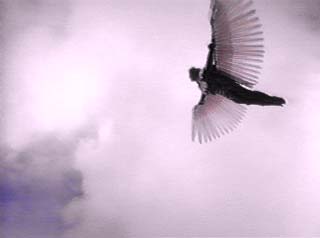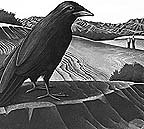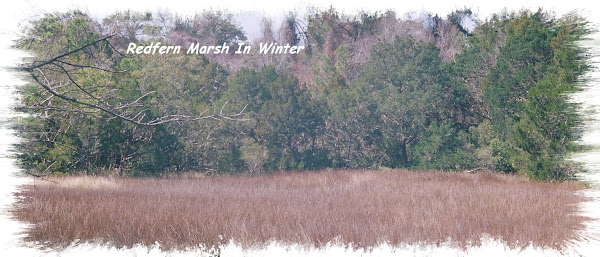I can tell the reader from experience that this is all true.
Mystic visions or brain circuits at work?
By Sharon Begley, Newsweek,
Copyright May 7, 2001. >>
More neurotheology resources
In the new field of "neurotheology," scientists seek the
biological basis of spirituality. Is God all in our heads?
May 7 issue - One Sunday morning in March, 19 years ago, as Dr. James Austin waited for a train in London, he glanced away from the tracks toward the river Thames. The neurologist-who was spending a sabbatical year in England-saw nothing out of the ordinary: the grimy Underground station, a few dingy buildings, some pale gray sky. He was thinking, a bit absent-mindedly, about the Zen Buddhist retreat he was headed toward. And then
Austin suddenly felt a sense of enlightenment unlike anything he had ever experienced. His sense of individual existence, of separateness from the physical world around him, evaporated like morning mist in a bright dawn. He saw things "as they really are," he recalls. The sense of "I, me, mine" disappeared. "Time was not present," he says. "I had a sense of eternity. My old yearnings, loathings, fear of death and insinuations of selfhood vanished. I had been graced by a comprehension of the ultimate nature of things."
CALL IT A MYSTICAL EXPERIENCE, a spiritual moment, even a religious epiphany, if you like-but Austin will not. Rather than interpret his instant of grace as proof of a reality beyond the comprehension of our senses, much less as proof of a deity, Austin took it as "proof of the existence of the brain." He isn't being smart-alecky. As a neurologist, he accepts that all we see, hear, feel and think is mediated or created by the brain. Austin's moment in the Underground therefore inspired him to explore the neurological underpinnings of spiritual and mystical experience. In order to feel that time, fear and self-consciousness have dissolved, he reasoned,certain brain circuits must be interrupted. Which ones? Activity in the amygdala, which monitors the environment for threats and registers fear, must be damped. Parietal-lobe circuits, which orient you in space and mark the sharp distinction between self and world, must go quiet.
Frontal- and temporal-lobe circuits, which mark time and generate self-awareness, must disengage. When that happens, Austin concludes in a recent paper, "what we think of as our 'higher' functions of selfhood appear briefly to 'drop out,' 'dissolve,' or be 'deleted from consciousness'." When he spun out his theories in 1998, in the 844-page "Zen and the Brain,"
it was published not by some flaky New Age outfit but by MIT Press.
May 2 - Why God Won't Go Away: Brain science and the biology of belief" by Andrew Newberg, M.D.
Since then, more and more scientists have flocked to "neurotheology," the study of the neurobiology of religion and spirituality. Last year the American Psychological Association published "Varieties of Anomalous Experience," covering enigmas from near-death experiences to mystical ones. At Columbia University's new Center for the Study of Science and Religion, one program investigates how spiritual experiences reflect "peculiarly recurrent events in human brains." In December, the scholarly Journal of Consciousness Studies devoted its issue to religious moments ranging from "Christic visions" to "shamanic states of consciousness." In May the book "Religion in Mind," tackling subjects such as how religious practices act back on the brain's frontal lobes to inspire optimism and even creativity, reaches stores. And in "Why God Won't Go Away," published in April, Dr. Andrew Newberg of the University of Pennsylvania and his late collaborator, Eugene d'Aquili, use brain-imaging data they collected from Tibetan Buddhists lost in meditation and from Franciscan nuns deep in prayer to ... well, what they do involves a lot of neuro-jargon about lobes and fissures. In a nutshell, though, they use the data to identify what seems to be the brain's spirituality circuit, and to explain how it is that religious rituals have the power to move believers and nonbelievers alike.
What all the new research shares is a passion for uncovering the neurological underpinnings of spiritual and mystical experiences-for discovering, in short, what happens in our brains when we sense that we "have encountered a reality different from-and, in some crucial sense, higher than-the reality of everyday experience," as psychologist David Wulff of Wheaton College in Massachusetts puts it.
OUTSIDE OF TIME AND SPACE
In neurotheology, psychologists and neurologists try to pinpoint which regions turn on, and which turn off, during experiences that seem to exist outside time and space. In this way it differs from the rudimentary research of the 1950s and 1960s that found, yeah, brain waves change when you meditate. But that research was silent on why brain waves change, or which specific regions in the brain lie behind the change.
Neuroimaging of a living, working brain simply didn't exist back then. In contrast, today's studies try to identify the brain circuits that surge with activity when we think we have encountered the divine, and when we feel transported by intense prayer, an uplifting ritual or sacred music.
Although the field is brand new and the answers only tentative, one thing is clear. Spiritual experiences are so consistent across cultures, across time and across faiths, says Wulff, that it "suggest[s] a common core that is likely a reflection of structures and processes in the human brain."
There was a feeling of energy centered within me ... going out to infinite space and returning ... There was a relaxing of the dualistic mind, and an intense feeling of love. I felt a profound letting go of the boundaries around me, and a connection with some kind of energy and state of being that had a quality of clarity, transparency and joy.
I felt a deep and profound sense of connection to everything, recognizing that there never was a true separation at all.
On the Cover: Science & the Spirit
A look at the relationship between religion and the brain
Religion And The Brain
Is God all in our heads? A look at 'Neurotheology' and the biological basis of spirituality- Faith Is More Than A Feeling
The problem with Neurotheology is that it confuses spiritual experiences with religion That is how Dr. Michael J. Baime, a colleague of Andrew Newberg's at Penn, describes what he feels at the moment of peak transcendence when he practices Tibetan Buddhist meditation, as he has since he was 14 in 1969. Baime offered his brain to Newberg, who, since childhood, had wondered about the mystery of God's existence. At Penn, Newberg's specialty is radiology, so he teamed with Eugene d'Aquili to use imaging techniques to detect which regions of the brain are active during spiritual experiences. The scientists recruited Baime and seven other Tibetan Buddhists, all skilled meditators.
TESTING FOR THE TIMELESS AND INFINITE
In a typical run, Baime settled onto the floor of a small darkened room, lit only by a few candles and filled with jasmine incense. A string of twine lay beside him. Concentrating on a mental image, he focused and focused, quieting his conscious mind (he told the scientists afterward) until something he identifies as his true inner self emerged. It felt "timeless and infinite," Baime said
afterward, "a part of everyone and everything in existence." When he reached the "peak" of spiritual intensity, he tugged on the twine. Newberg, huddled outside the room and holding the other end, felt the pull and quickly injected a radioactive tracer into an IV line that ran into Baime's left arm. After a few moments, he whisked Baime off to a SPECT (single photon emission computed tomography) machine. By detecting the tracer, it tracks blood flow in the brain. Blood flow correlates with neuronal activity.
Attention: Linked to concentration, the frontal lobe lights up during meditation
Religious emotions: The middle temporal lobe is linked to emotional aspects of religious experience, such as joy and awe
Sacred images: The lower temporal lobe is involved in the process by which images, such as candles or crosses, facilitate prayer and meditation
Response to religious words: At the juncture of three lobes, this region governs response to language Cosmic unity: When the parietal lobes quiet down, a person can feel at one with the universe
---------------------------------------------------------------------------
Source: Newsweek
The SPECT images are as close as scientists have come to snapping a photo of a transcendent experience. As expected, the prefrontal cortex, seat of attention, lit up: Baime, after all, was focusing deeply. But it was a quieting of activity that stood out. A bundle of neurons in the superior parietal lobe, toward the top and back of the brain, had gone dark. This region, nicknamed the "orientation association area," processes information about space and time, and the orientation of the body in space.
It determines where the body ends and the rest of the world begins. Specifically, the left orientation area creates the sensation of a physically delimited body; the right orientation area creates the sense of the physical space in which the body exists. (An injury to this area can so cripple your ability to maneuver in physical space that you cannot figure the distance and angles needed to navigate the route to a chair across the room.)
SELF AND NOT-SELF
The orientation area requires sensory input to do its calculus. "If you block sensory inputs to this region, as you do during the intense concentration of meditation, you prevent the brain from forming the distinction between self and not-self," says Newberg. With no information from the senses arriving, the left orientation area cannot find any boundary between the self and the world. As a result, the brain seems to have no choice but "to perceive the self as endless and intimately interwoven with everyone and everything," Newberg and d'Aquili write in "Why God Won't Go Away." The right orientation area, equally bereft of sensory data, defaults to a feeling of infinite space. The meditators feel that they have touched infinity.
I felt communion, peace, openness to experience ... [There was] an awareness and responsiveness to God's presence around me, and a feeling of centering, quieting, nothingness, [as well as] moments of fullness of the presence of God. [God was] permeating my being.
This is how her 45-minute prayer made Sister Celeste, a Franciscan nun, feel, just before Newberg SPECT-scanned her. During her most intensely religious moments, when she felt a palpable sense of God's presence and an absorption of her self into his being, her brain displayed changes like those in the Tibetan Buddhist meditators: her orientation area went dark. What Sister Celeste and the other nuns in the study felt, and what the meditators experienced, Newberg emphasizes, "were neither mistakes nor wishful thinking. They reflect real, biologically based events in the brain." The fact that spiritual contemplation affects brain activity gives the experience a reality that psychologists and neuroscientists had long denied it, and explains why people experience ineffable, transcendent events as equally real as seeing a wondrous sunset or stubbing their toes.
PINPOINTING SPIRITUAL EXPERIENCE
That a religious experience is reflected in brain activity is not too surprising, actually. Everything we experience-from the sound of thunder to the sight of a poodle, the feeling of fear and the thought of a polka-dot castle-leaves a trace on the brain. Neurotheology is stalking bigger game than simply affirming that spiritual feelings leave neural footprints, too. By pinpointing the brain areas involved in spiritual experiences and tracing how such experiences arise, the scientists hope to learn whether anyone can have such experiences, and why spiritual experiences have the qualities they do.
I could hear the singing of the planets, and wave after wave of light washed over me. But ... I was the light as well ... I no longer existed as a separate I' ... I saw into the structure of the universe. I had the impression of knowing beyond knowledge and being given glimpses into ALL.
That was how author Sophy Burnham described her experience at Machu Picchu, in her 1997 book "The Ecstatic Journey." Although there was no scientist around to whisk her into a SPECT machine and confirm that her orientation area was AWOL, it was almost certainly quiescent. That said, just because an experience has a neural correlate does not mean that the experience exists "only" in the brain, or that it is a figment of brain activity with no independent reality. Think of what happens when you dig into an apple pie. The brain's olfactory region registers the aroma of the cinnamon and fruit. The somatosensory cortex processes the feel of the flaky crust on the tongue and lips. The visual cortex registers the sight of the pie.
Remembrances of pies past (Grandma's kitchen, the corner bake shop ...) activate association cortices. A neuroscientist with too much time on his hands could undoubtedly produce a PET scan of "your brain on apple pie." But that does not negate the reality of the pie. "The fact that spiritual experiences can be associated with distinct neural activity does not necessarily mean that such experiences are mere neurological illusions," Newberg insists. "It's no safer to say that spiritual urges and sensations are caused by brain activity than it is to say that the neurological changes through which we experience the pleasure of eating an apple cause the apple to exist."
The bottom line, he says, is that "there is no way to determine whether the neurological changes associated with spiritual experience mean that the brain is causing those experiences ... or is instead perceiving a spiritual reality."
PRODUCING VISIONS
In fact, some of the same brain regions involved in the pie experience create religious experiences, too. When the image of a cross, or a Torah crowned in silver, triggers a sense of religious awe, it is because the brain's visual-association area, which interprets what the eyes see and connects images to emotions and memories, has learned to link those images to that feeling. Visions that arise during prayer or ritual are also generated in the association area: electrical stimulation of the temporal lobes (which nestle along the sides of the head and house the circuits responsible for language, conceptual thinking and associations) produces visions.
Temporal-lobe epilepsy-abnormal bursts of electrical activity in these regions-takes this to extremes. Although some studies have cast doubt on the connection between temporal-lobe epilepsy and religiosity, others find that the condition seems to trigger vivid, Joan of Arc-type religious visions and voices. In his recent book "Lying Awake," novelist Mark Salzman conjures up the story of a cloistered nun who, after years of being unable to truly feel the presence of God, begins having visions.
The cause is temporal-lobe epilepsy. Sister John of the Cross must wrestle with whether to have surgery, which would probably cure her-but would also end her visions. Dostoevsky, Saint Paul, Saint Teresa of Avila, Proust and others are thought to have had temporal-lobe epilepsy, leaving them obsessed with matters of the spirit.
Although temporal-lobe epilepsy is rare, researchers suspect that focused bursts of electrical activity called "temporal-lobe transients" may yield mystical experiences. To test this idea, Michael Persinger of Laurentian University in Canada fits a helmet jury-rigged with electromagnets onto a volunteer's head.
The helmet creates a weak magnetic field, no stronger than that produced by a computer monitor. The field triggers bursts of electrical activity in the temporal lobes, Persinger finds, producing sensations that volunteers describe as supernatural or spiritual: an out-of-body experience, a sense of the divine. He suspects that religious experiences are evoked by mini electrical storms in the temporal lobes, and that such storms can be triggered by anxiety, personal crisis, lack of oxygen, low blood sugar and simple fatigue-suggesting a reason that some people "find God" in such moments. Why the temporal lobes? Persinger speculates that our left temporal lobe maintains our sense of self. When that region is stimulated but the right stays quiescent, the left interprets this as a sensed presence, as the self departing the body, or of God.
Those most open to mystical experience tend also to be open to new experiences generally. They are usually creative and innovative, with a breadth of interests and a tolerance for ambiguity (as determined by questionnaire).
They also tend toward fantasy, notes David Wulff ... I was alone upon the seashore ... I felt that I
... return[ed] from the solitude of individuation into the consciousness of unity with all that is ... Earth, heaven, and sea resounded as in one vast world encircling harmony ... I felt myself one with them.
Is an experience like this one, described by the German philosopher Malwida von Meysenburg in 1900, within the reach of anyone? "Not everyone who meditates encounters these sorts of unitive experiences," says Robert K.C. Forman, a scholar of comparative religion at Hunter College in New York City. "This suggests that some people may be genetically or temperamentally predisposed to mystical ability." Those most open to mystical experience tend also to be open to new experiences generally. They are usually creative and innovative, with a breadth of interests and a tolerance for ambiguity (as determined by questionnaire).
They also tend toward fantasy, notes David Wulff, "suggesting a capacity to suspend the judging process that distinguishes imaginings and real events." Since "we all have the brain circuits that mediate spiritual experiences, probably most people have the capacity for having such experiences," says Wulff. "But it's possible to foreclose that possibility. If you are rational, controlled, not prone to fantasy, you will probably resist the experience."
MEASURING SPIRITUAL FORCE
In survey after survey since the 1960s, between 30 and 40 percent or so of those asked say they have, at least once or twice, felt "very close to a powerful, spiritual force that seemed to lift you out of yourself." Gallup polls in the 1990s found that 53 percent of American adults said they had had "a moment of sudden religious awakening or insight." Reports of mystical experience increase with education, income and age (people in their 40s and 50s are most likely to have them).
Yet many people seem no more able to have such an experience than to fly to Venus. One explanation came in 1999, when Australian researchers found that people who report mystical and spiritual experiences tend to have unusually easy access to subliminal consciousness. "In people whose unconscious thoughts tend to break through into consciousness more readily, we find some correlation with spiritual experiences," says psychologist Michael Thalbourne of the University of Adelaide. Unfortunately, scientists are pretty clueless about what allows subconscious thoughts to pop into the consciousness of some people and not others. The single strongest predictor of such experiences, however, is something called "dissociation." In this state, different regions of the brain disengage from others. "This theory, which explains hypnotizability so well, might explain mystical states, too," says Michael Shermer, director of the Skeptics Society, which debunks paranormal phenomena. "Something really seems to be going on in the brain, with some module dissociating from the rest of the cortex."
Newsweek On Air: God and the Brain
THE NEURAL BASIS FOR RELIGIOUS EXPERIENCE
That dissociation may reflect unusual electrical crackling in one or more brain regions. In 1997, neurologist Vilayanur Ramachandran told the annual meeting of the Society for Neuroscience that there is "a neural basis for religious experience." His preliminary results suggested that depth of religious feeling, or religiosity, might depend on natural-not helmet-induced-enhancements in the electrical activity of the temporal lobes.
Interestingly, this region of the brain also seems important for speech perception. One experience common to many spiritual states is hearing the voice of God. It seems to arise when you misattribute inner speech (the "little voice" in your head that you know you generate yourself) to something outside yourself. During such experiences, the brain's Broca's area (responsible for speech production) switches on. Most of us can tell this is our inner voice speaking. But when sensory information is restricted, as happens during meditation or prayer, people are "more likely to misattribute internally generated thoughts to an external source," suggests psychologist Richard Bentall of the University of Manchester in England in the book
"Varieties of Anomalous Experience."
Stress and emotional arousal can also interfere with the brain's ability to find the source of a voice, Bentall adds. In a 1998 study, researchers found that one particular brain region, called the right anterior cingulate, turned on when people heard something in the environment-a voice or a sound-and also when they hallucinated hearing something. But it stayed quiet when they imagined hearing something and thus were sure it came from their own brain. This region, says Bentall, "may contain the neural circuits responsible for tagging events as originating from the external world." When it is inappropriately switched on, we are fooled into thinking the voice we hear comes from outside us.
Even people who describe themselves as nonspiritual can be moved by religious ceremonies and liturgy. Hence the power of ritual. Drumming, dancing, incantations-all rivet attention on a single, intense source of sensory stimulation, including the body's own movements. They also evoke powerful emotional responses. That combination-focused attention that excludes other sensory stimuli, plus heightened emotion-is key. Together, they seem to send the brain's arousal system into hyperdrive, much as intense fear does. When this happens, explains Newberg, one of the brain structures responsible for maintaining equilibrium-the hippocampus-puts on the brakes.
It inhibits the flow of signals between neurons, like a traffic cop preventing any more cars from entering the on-ramp to a tied-up highway.
'SOFTENING OF THE BOUNDARIES OF THE SELF'
The result is that certain regions of the brain are deprived of neuronal input. One such deprived region seems to be the orientation area, the same spot that goes quiet during meditation and prayer. As in those states, without sensory input the orientation area cannot do its job of maintaining a sense of where the self leaves off and the world begins. That's why ritual and liturgy can bring on what Newberg calls a "softening of the boundaries of the self"-and the sense of oneness and spiritual unity. Slow chanting, elegiac liturgical melodies and whispered ritualistic prayer all seem to work their magic in much the same way: they turn on the hippocampus directly and block neuronal traffic to some brain regions. The result again is "blurring the edges of the brain's sense of self, opening the door to the unitary states that are the primary goal of religious ritual," says Newberg.
Researchers' newfound interest in neurotheology reflects more than the availability of cool new toys to peer inside the working brain. Psychology and neuroscience have long neglected religion. Despite its centrality to the mental lives of so many people, religion has been met by what David Wulff calls "indifference or even apathy" on the part of science. When one psychologist, a practicing Christian, tried to discuss in his introductory psych book the role of faith in people's lives, his publisher edited out most of it-for fear of offending readers. The rise of neurotheology represents a radical shift in that attitude.
And whatever light science is shedding on spirituality, spirituality is returning the favor: mystical experiences, says Forman, may tell us something about consciousness, arguably the greatest mystery in neuroscience. "In mystical experiences, the content of the mind fades, sensory awareness drops out, so you are left only with pure consciousness," says Forman. "This tells you that consciousness does not need an object, and is not a mere byproduct of sensory action."
Newsweek.MSNBC.com
For all the tentative successes that scientists are scoring in their search for the biological bases of religious, spiritual and mystical experience, one mystery will surely lie forever beyond their grasp. They may trace a sense of transcendence to this bulge in our gray matter.
And they may trace a feeling of the divine to that one. But it is likely that they will never resolve the greatest question of all-namely, whether our brain wiring creates God, or whether God created our brain wiring. Which you believe is, in the end, a matter of faith.
Dear Reader, please do not assume that you understand anything you read on this blog.(:-)
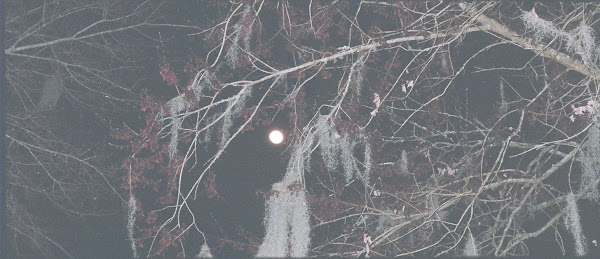

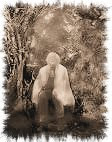.jpg)

.jpg)
.jpg)

